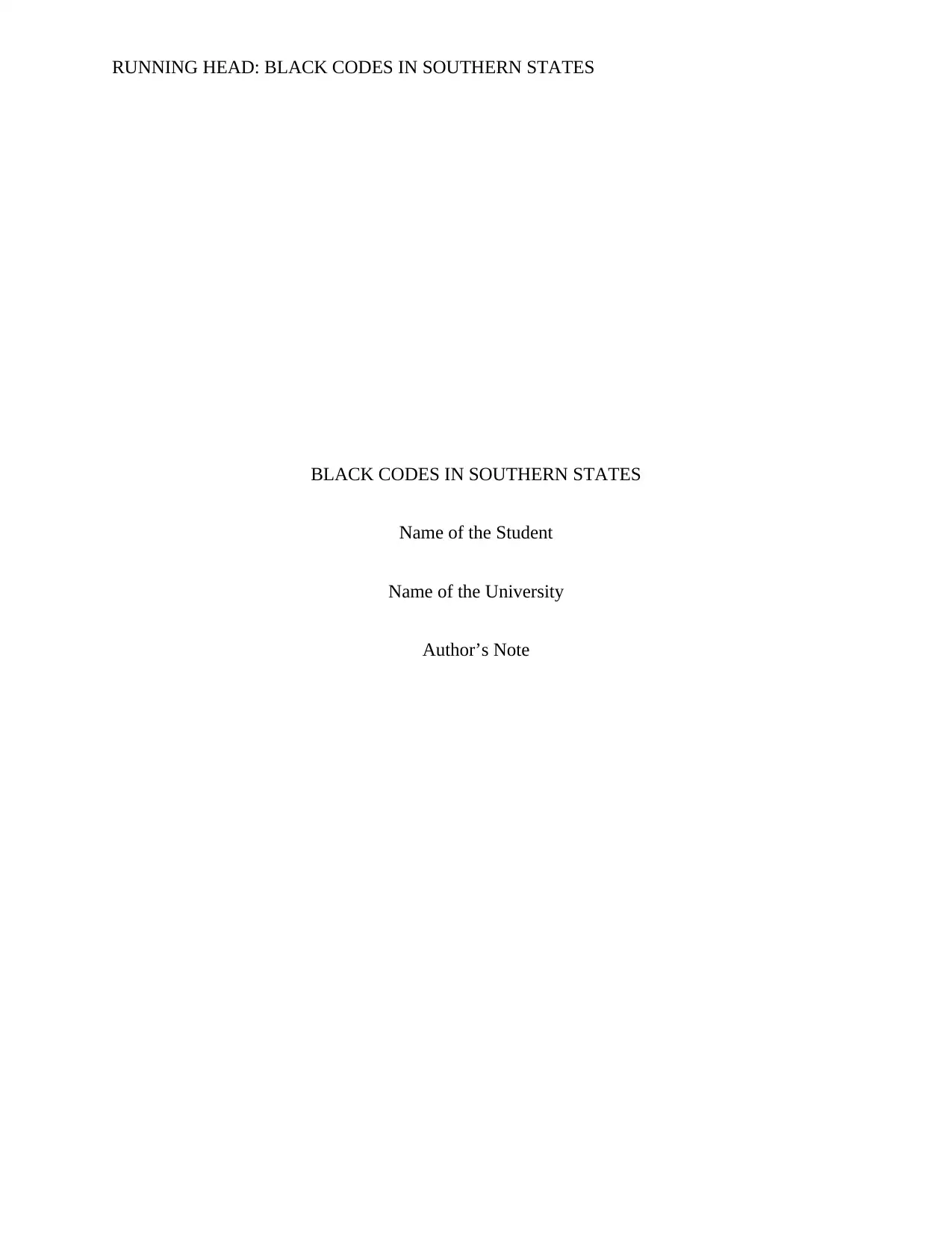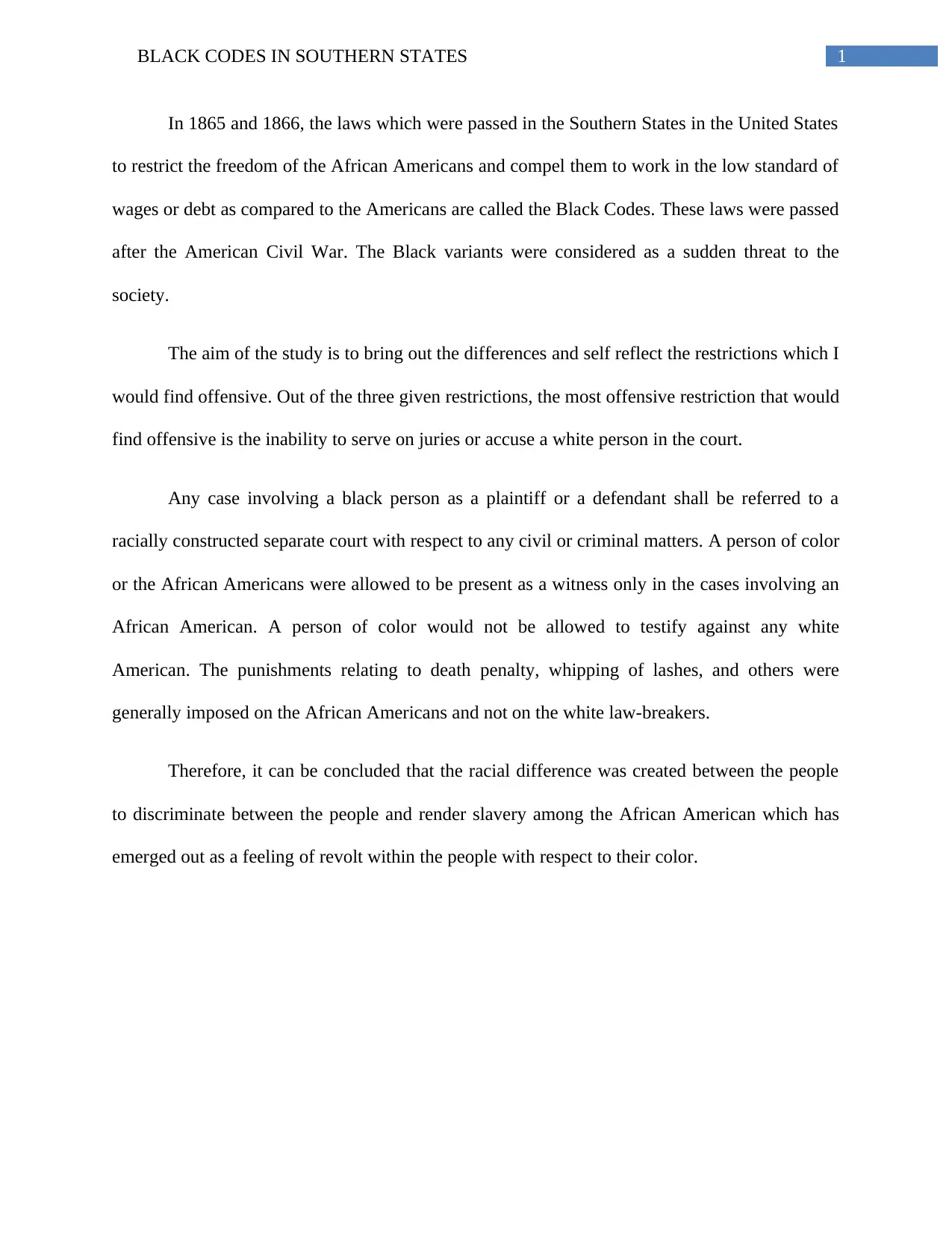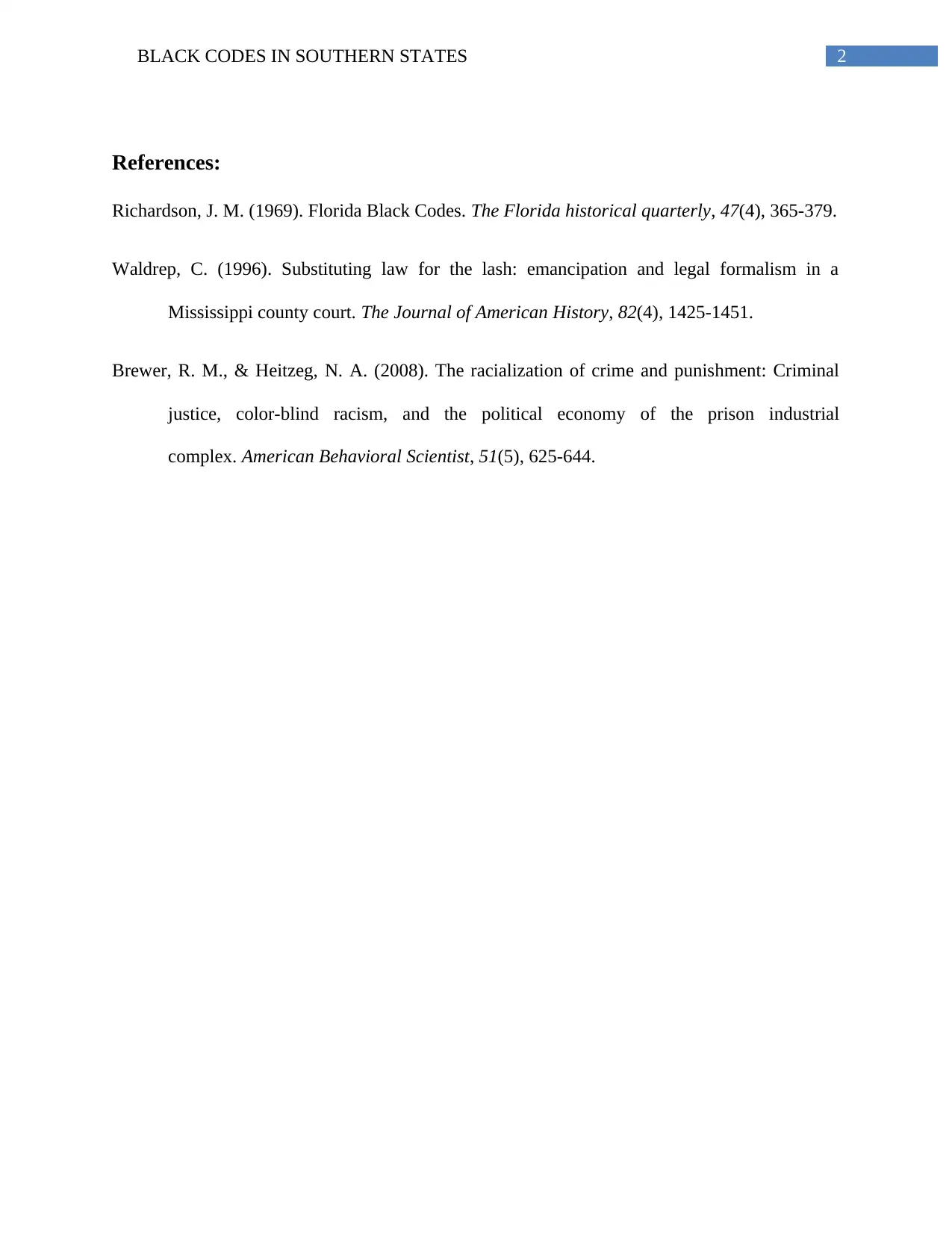Analysis of Black Codes in the Southern States: A Historical Study
VerifiedAdded on 2022/11/24
|3
|410
|30
Homework Assignment
AI Summary
This assignment examines the Black Codes enacted in the Southern States following the American Civil War. The codes, designed to restrict the freedom of African Americans, are analyzed in terms of their impact on the African American community. The assignment highlights discriminatory practice...

RUNNING HEAD: BLACK CODES IN SOUTHERN STATES
BLACK CODES IN SOUTHERN STATES
Name of the Student
Name of the University
Author’s Note
BLACK CODES IN SOUTHERN STATES
Name of the Student
Name of the University
Author’s Note
Paraphrase This Document
Need a fresh take? Get an instant paraphrase of this document with our AI Paraphraser

1BLACK CODES IN SOUTHERN STATES
In 1865 and 1866, the laws which were passed in the Southern States in the United States
to restrict the freedom of the African Americans and compel them to work in the low standard of
wages or debt as compared to the Americans are called the Black Codes. These laws were passed
after the American Civil War. The Black variants were considered as a sudden threat to the
society.
The aim of the study is to bring out the differences and self reflect the restrictions which I
would find offensive. Out of the three given restrictions, the most offensive restriction that would
find offensive is the inability to serve on juries or accuse a white person in the court.
Any case involving a black person as a plaintiff or a defendant shall be referred to a
racially constructed separate court with respect to any civil or criminal matters. A person of color
or the African Americans were allowed to be present as a witness only in the cases involving an
African American. A person of color would not be allowed to testify against any white
American. The punishments relating to death penalty, whipping of lashes, and others were
generally imposed on the African Americans and not on the white law-breakers.
Therefore, it can be concluded that the racial difference was created between the people
to discriminate between the people and render slavery among the African American which has
emerged out as a feeling of revolt within the people with respect to their color.
In 1865 and 1866, the laws which were passed in the Southern States in the United States
to restrict the freedom of the African Americans and compel them to work in the low standard of
wages or debt as compared to the Americans are called the Black Codes. These laws were passed
after the American Civil War. The Black variants were considered as a sudden threat to the
society.
The aim of the study is to bring out the differences and self reflect the restrictions which I
would find offensive. Out of the three given restrictions, the most offensive restriction that would
find offensive is the inability to serve on juries or accuse a white person in the court.
Any case involving a black person as a plaintiff or a defendant shall be referred to a
racially constructed separate court with respect to any civil or criminal matters. A person of color
or the African Americans were allowed to be present as a witness only in the cases involving an
African American. A person of color would not be allowed to testify against any white
American. The punishments relating to death penalty, whipping of lashes, and others were
generally imposed on the African Americans and not on the white law-breakers.
Therefore, it can be concluded that the racial difference was created between the people
to discriminate between the people and render slavery among the African American which has
emerged out as a feeling of revolt within the people with respect to their color.

2BLACK CODES IN SOUTHERN STATES
References:
Richardson, J. M. (1969). Florida Black Codes. The Florida historical quarterly, 47(4), 365-379.
Waldrep, C. (1996). Substituting law for the lash: emancipation and legal formalism in a
Mississippi county court. The Journal of American History, 82(4), 1425-1451.
Brewer, R. M., & Heitzeg, N. A. (2008). The racialization of crime and punishment: Criminal
justice, color-blind racism, and the political economy of the prison industrial
complex. American Behavioral Scientist, 51(5), 625-644.
References:
Richardson, J. M. (1969). Florida Black Codes. The Florida historical quarterly, 47(4), 365-379.
Waldrep, C. (1996). Substituting law for the lash: emancipation and legal formalism in a
Mississippi county court. The Journal of American History, 82(4), 1425-1451.
Brewer, R. M., & Heitzeg, N. A. (2008). The racialization of crime and punishment: Criminal
justice, color-blind racism, and the political economy of the prison industrial
complex. American Behavioral Scientist, 51(5), 625-644.
⊘ This is a preview!⊘
Do you want full access?
Subscribe today to unlock all pages.

Trusted by 1+ million students worldwide
1 out of 3
Related Documents
Your All-in-One AI-Powered Toolkit for Academic Success.
+13062052269
info@desklib.com
Available 24*7 on WhatsApp / Email
![[object Object]](/_next/static/media/star-bottom.7253800d.svg)
Unlock your academic potential
© 2024 | Zucol Services PVT LTD | All rights reserved.




